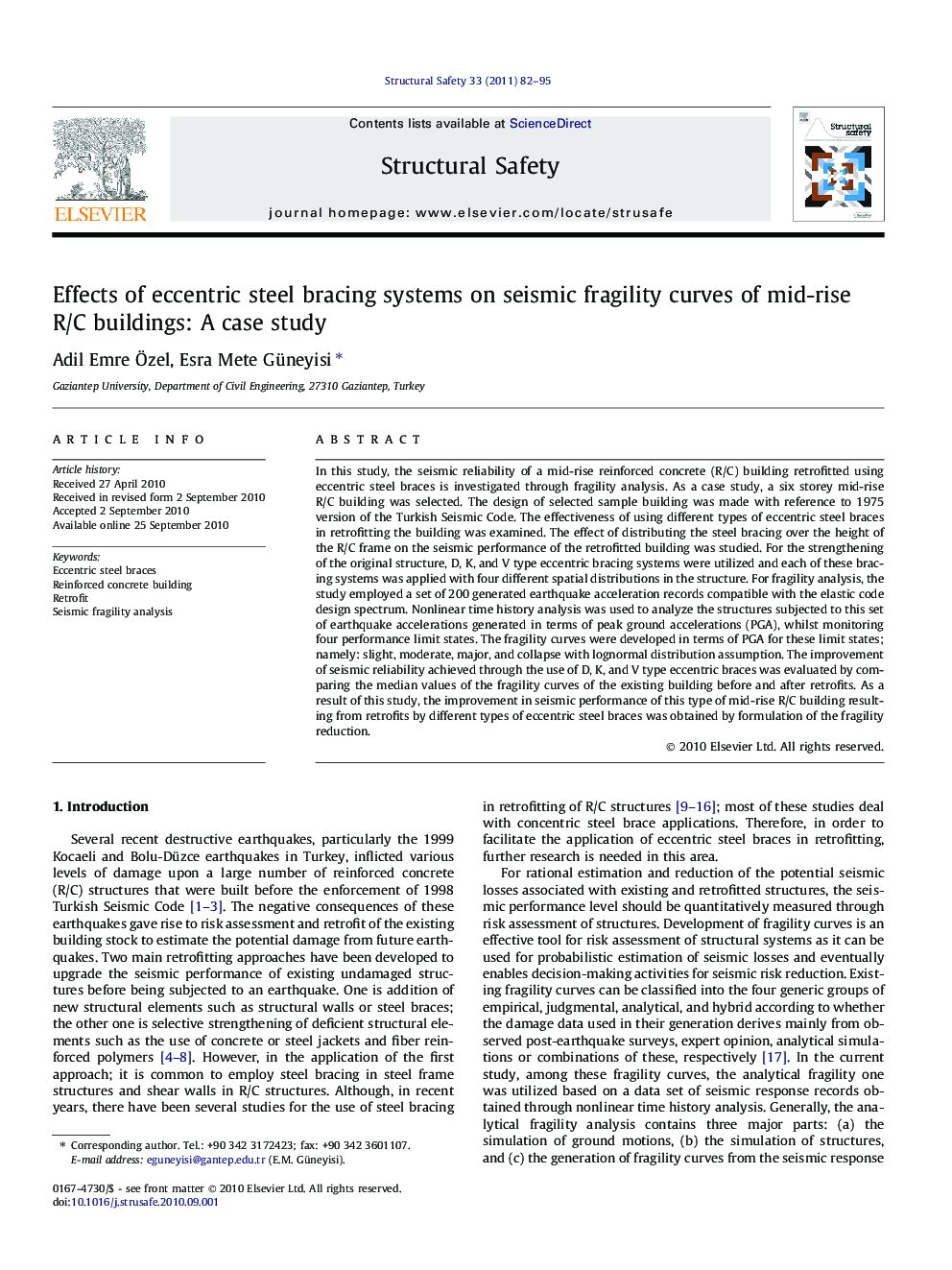| Article ID | Journal | Published Year | Pages | File Type |
|---|---|---|---|---|
| 307672 | Structural Safety | 2011 | 14 Pages |
In this study, the seismic reliability of a mid-rise reinforced concrete (R/C) building retrofitted using eccentric steel braces is investigated through fragility analysis. As a case study, a six storey mid-rise R/C building was selected. The design of selected sample building was made with reference to 1975 version of the Turkish Seismic Code. The effectiveness of using different types of eccentric steel braces in retrofitting the building was examined. The effect of distributing the steel bracing over the height of the R/C frame on the seismic performance of the retrofitted building was studied. For the strengthening of the original structure, D, K, and V type eccentric bracing systems were utilized and each of these bracing systems was applied with four different spatial distributions in the structure. For fragility analysis, the study employed a set of 200 generated earthquake acceleration records compatible with the elastic code design spectrum. Nonlinear time history analysis was used to analyze the structures subjected to this set of earthquake accelerations generated in terms of peak ground accelerations (PGA), whilst monitoring four performance limit states. The fragility curves were developed in terms of PGA for these limit states; namely: slight, moderate, major, and collapse with lognormal distribution assumption. The improvement of seismic reliability achieved through the use of D, K, and V type eccentric braces was evaluated by comparing the median values of the fragility curves of the existing building before and after retrofits. As a result of this study, the improvement in seismic performance of this type of mid-rise R/C building resulting from retrofits by different types of eccentric steel braces was obtained by formulation of the fragility reduction.
